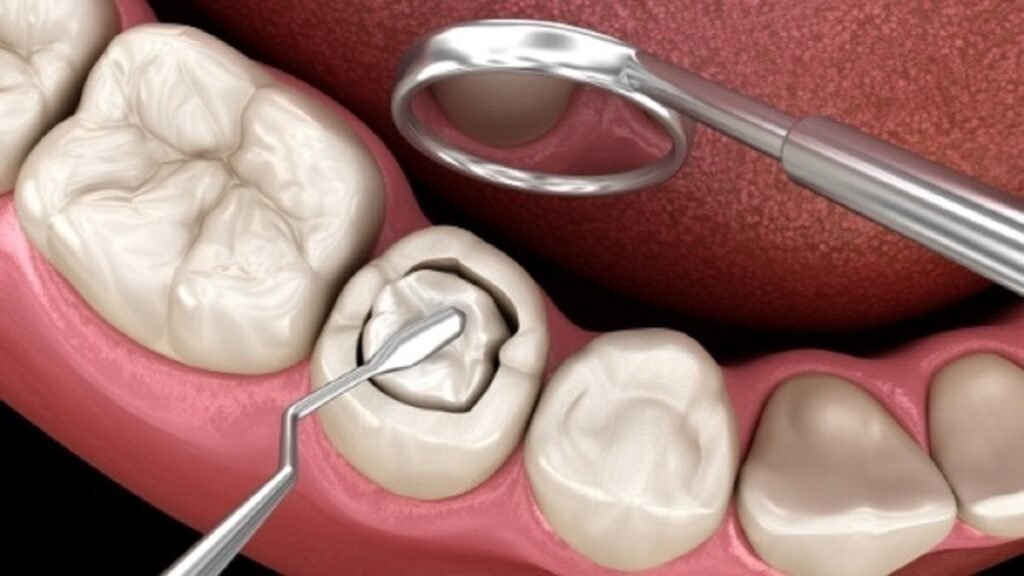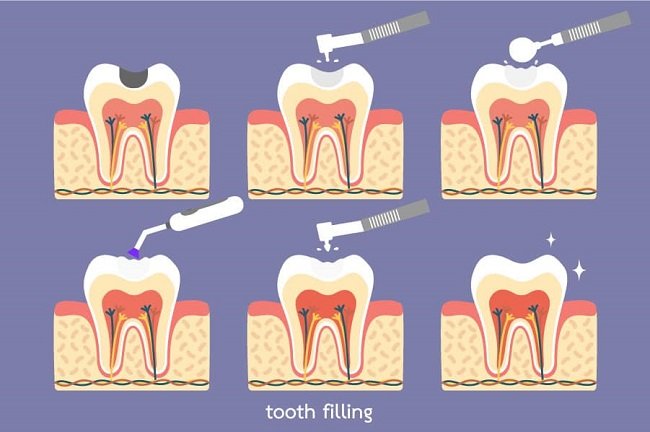Keeping teeth healthy is important for overall health, but because of cavities, wear, or injury, teeth can suffer damage. Dental filling resin is one of the most frequently used materials for tooth restoration due to its resistance, aesthetics, and functional ability. A lot of professionals suggest top-notch resins as the most durable materials for restoration. As a trusted name in the dental industry, Aidite has been at the forefront of developing high-quality dental materials for restorative procedures. This guide discusses dental filling resin with its advantages and uses and the best dental resins for different types of procedures.

What Is Dental Filling Resin?
Dental filling resin is a tooth-colored resin material used to fill cavities or repair broken teeth. Compared to traditional metal fillings, resin-based materials provide equivalent strength while reflecting the natural care of teeth. Modern dentistry mainly uses these as tooth colored fillings that look beautiful and provide ultimate satisfaction to the patient.
Advantages of Dental Resin Filling
- Aesthetics: Blends in with your natural tooth shade.
- Resistance to fracture: Provides restorations that are durable.
- Much more conservative: Does not need as much removal of healthy tooth structure
- Bonding Power: Attaches to your natural teeth with bonding agents
- Versatility: Can be used for anterior and posterior teeth restorations.
Common Uses of Dental Filling Resin
One of the most popular items in the modern dentist’s arsenal is the dental filling resin. Coming to the role of tooth colored fillings, here are some of the most common applications and how they ultimately mean a lot to oral health.
1. Cavity Repair
When it comes to dental filling resin, one of the most common uses is for cavities. This is great because it seals away the decayed areas to stop them from progressing and retaining the natural structure of the tooth.
2. Cosmetic Improvements
Dentists use resin based dental composites to improve local aesthetics, which can include contouring of teeth, spaces in between teeth, and minor stains or discolorations.
3. Restoration of Fractured or Chipped Teeth
For chipped or broken teeth composite fillings are a completely natural repair of the tooth, which restores functionality and the beauty of the tooth.
4. Root Surface Protection
Durable dental filling resin can be placed on root surfaces that are exposed during gum recession to decrease tooth sensitivity and prevent tooth decay.
5. Orthodontic Adjustments
Some orthodontic procedures utilize dental bonding agents for the adherence of brackets or the reshaping of teeth to align properly.
How Dental Filling Resin Works

Step 1: Tooth Preparation
The dentist carves the outer layers of the enamel from the tooth, but only to the point where decay or irritation beyond the enamel exists. The area around the tooth is cleaned and dried to be bonded.
Step 2: Use of Dental Bonding Agents
A material known as a dental bonding agent is then placed on the prepared surface. This guarantees a secure adhesion between the dental filling resin and tooth structure that prevents leakage and improves success.
Step 3: Insertion of the Composite Fillings
This dental filling resin is placed in layers in the same manner a dental filling would be. All of the layers are shaped and smoothed to fit and look natural.
Step 4: Light Curing Process
Light cured dental resin is used that are hardened with a special curing light to make the filling strong and durable.
Step 5: Shaping and Polishing
The dentist adjusts the filling to make sure it matches the bite and polishes the filling to make sure the surface matches the adjacent tooth.
This final step completes the restoration process, leaving the patient with a fully functional and aesthetically pleasing tooth
The Role of Dental Filling Resin in Preventative Dentistry
Although dental filling resin is broadly used for restorative purposes. Its gradual contribution to preventative dentistry is also significant. In this age, many dentists are using resin based dental composites and sealing small pits and fissures on tooth surface to prevent cavities before they form. These fillings, also called sealants, offer a protective layer from bacteria and food debris and prevent tooth decay from occurring.
Benefits of Preventative Resin Sealants:
- Stops Early Tooth Decay: Seals areas prone to bacterial buildup.
- Lowers Sensitivity: Helps to provide protection to the exposed dentin and reduces sensitivity.
- Durable Protection: A sealant can last for years with the right maintenance.
- Fast and Pain-Free Treatment: It is quick and non-invasive, making it easy for children and adults.
- Economic: Preventative resin treatments can save money on costlier restorative procedures down the road.
The use of dental filling resin in preventive care empowers not only the dentists but also the patients to take measures toward better oral health for as long as possible.
Why Choose Dental Filling Resin Over Other Materials?
Dental filling resin allows a minimally invasive solution with durable results, unlike traditional materials. Comparison of dental filling resin with other common filling materials:

| Feature | Dental Filling Resin | Amalgam Fillings | Gold Fillings |
| Aesthetic Appeal | High | Low | Moderate |
| Durability | High | High | Very High |
| Biocompatibility | Excellent | Moderate | Excellent |
| Tooth Preservation | More Conservative | Less Conservative | Conservative |
| Application Process | Simple & Quick | Requires More Prep | Requires Lab Work |
Now looking at the comparison, it is evident that dental filling resin offers a compromise between aesthetics and solid functionality, whilst also conservatively conserving natural tooth structure.
Best Practices for Maintaining Dental Filling Resin
Below are some of the best practices to help preserve resin based dental composites and ensure optimal oral health.
- Daily Oral Care: Brush twice a day and floss to prevent cavities
- Avoid Hard Foods: Chewing on ice or hard candy can fracture a resin-based dental composite.
- Regular Dental Checkups: Regular check-ups ensure tooth colored fillings remain intact.
- Avoid Abrasive Toothpaste: Abrasive toothpaste is a potential problem for composite fillings in the long run.
- Prevent Filling Damage: If you are a teeth-grinder, you will want to get a night guard to protect your fillings.
Aidite Dental Resin: A High-Quality Solution
If you are looking for the best dental filling resin, then Aidite is the best choice. Introducing their professional dental resin that is perfect in terms of durability and aesthetics.
Aidite Dental Resin Property:
- Superior Toughness: Offers durable and abrasion-resistant restorations.
- Natural looking: Stains with different shades of the tooth to blend in well.
- Biocompatible Material: Low risk of causing any irritation or allergic reaction, making it safer for patients.
- Easy to Apply: Formulated for effortless movement and accurate placement.
- Widely used: Possible for placing anywhere from fillings to cosmetic corrections.
With these high-quality raw materials and innovative technology, Aidite dental resin brand is popular among the professionals and is an ideal choice for modern dentistry.
Frequently Asked Questions
Q1. What is the lifespan of dental filling resin?
Dental filling resin lasts for 5–10 years, depending on wearers oral hygiene habits, their dietary habits and how much dental care they seek. It can last longer if you have regular check-ups, brush properly, and avoid hard food.
Q2. Are resin-based dental composites safe?
The answer is yes; dental composites based on resins are safe, biocompatible, and mercury-free. They are a beautiful, non-toxic alternative to metals, providing a positive, durable, and aesthetically pleasing dental restoration.
Q3. Can I change my amalgam fillings to composite fillings?
Yes, even the amalgam fillings can be replaced with composite fillings to enhance the aesthetics as well as safety. A dentist properly assesses the aged filling and makes sure that when removed, the new one will adhere properly to the tooth for a long time.
Conclusion
Dental filling resin is a great option for restoring teeth, as they are sure to last and look good. Patients can benefit from strong and beautiful restorations because of the advances in resin based dental composites. Companies like Aidite provide high-quality dental materials trusted by professionals worldwide. Whether you require light cured dental resins or composite fillings or are looking for dental bonding agents, using good quality materials will provide durability for many years. With regular oral care and proper visits to your dentist, you can keep your dental filling resin around for many years while keeping a gorgeous smile!orgeous smile!



